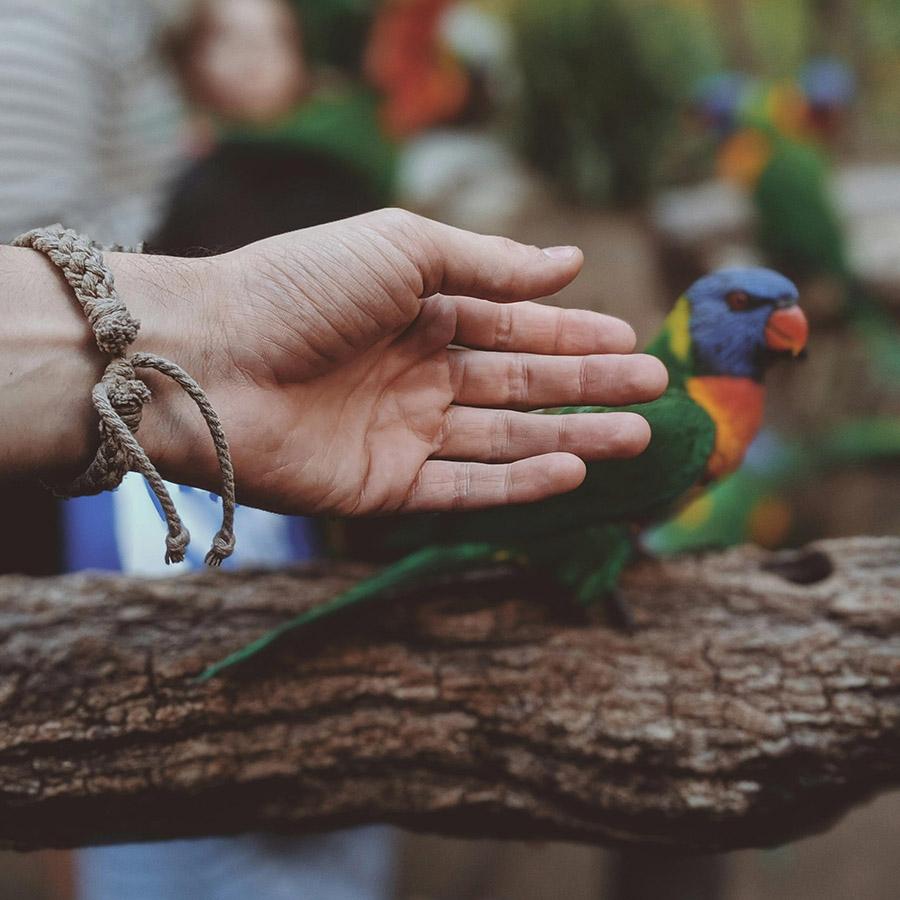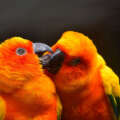Parrots are intelligent and sensitive creatures with complex social behaviors. It can be disappointing when your parrot avoids being petted, as this limits opportunities for bonding. This behavior often stems from trust issues, misunderstandings, or the bird’s natural temperament. Learning why your parrot hesitates and how to address it is crucial for building a comfortable and trusting relationship.
Decoding Parrot Behavior
Instincts and Body Language
As prey animals, parrots are naturally cautious, especially with hands reaching toward them. Their body language offers valuable clues about their comfort level:
- Dilated Pupils: Rapid dilation and constriction of pupils indicate agitation, fear, or excitement.
- Feather Position: Feathers held tightly against the body signal anxiety, while fluffed-up feathers typically indicate relaxation. However, persistent puffiness could mean illness.
- Beak Grinding: A content bird may grind its beak, showing it feels safe.
- Wing and Tail Movements: Wing flaring or tail wagging can signal irritation or excitement, depending on the context.
Individual Personality and Experiences
Each parrot is unique, and past experiences—positive or negative—shape their willingness to interact. Birds that have been mishandled or traumatized may be especially resistant to petting, requiring extra patience and understanding.

Why Parrots Avoid Petting
Lack of Trust
A parrot that avoids petting often does so due to insufficient trust. Building trust takes time and requires consistent, positive interactions. Spending quiet moments near your bird and offering treats can gradually help them associate you with safety and positivity.
Overstimulation or Miscommunication
Petting certain areas, like the back or wings, may mimic mating behaviors, triggering hormonal responses such as aggression or possessiveness. Focus on petting the head and neck, areas less likely to cause overstimulation.
Health Concerns
Illness or physical discomfort may cause a parrot to avoid touch. If your bird suddenly becomes withdrawn, consult an avian vet to rule out issues like arthritis, feather cysts, or skin irritation. Conversely, a bird that relents to touch unusually easily may also be unwell.
How to Help Your Parrot Feel Comfortable with Petting
Start with Trust-Building Activities
- Be Present: Spend time near your parrot’s cage, talking softly or reading aloud.
- Offer Treats: Reward calm behavior with small treats to associate your presence with positivity.
- Let Them Approach: Allow your parrot to make the first move in initiating contact.
Patience is key – Some parrots take months to warm up to new owners.
Use Positive Reinforcement
- Introduce a target stick or handheld perch to acclimate your parrot to your hand.
- Gradually bring the stick closer to your hand, rewarding calm reactions.
- Transition to using your hand for gentle interactions.
Keep sessions short (5-10 minutes) to prevent overstimulation and end on a positive note.
Observe and Respect Boundaries
Pay attention to signs of discomfort, such as moving away or hissing. If your parrot displays these behaviors, step back and try again later. Never force interactions, as this can damage trust.
Gradual Steps to Petting
- Start Small: Begin by lightly touching the beak or offering gentle head scratches.
- Reward Progress: Praise and treat your bird each time they allow a touch without retreating.
- Expand Slowly: Gradually increase the area and duration of petting as your bird becomes more comfortable.
Tip: Experiment with different types of touch to discover what your parrot enjoys. Always avoid petting below the neck unless necessary for health checks.
Common Mistakes to Avoid
- Forcing Interaction: Never force your parrot to be touched. This can lead to fear and aggression.
- Ignoring Body Language: Pay close attention to your bird’s signals to avoid overstimulation.
- Petting Inappropriate Areas: Avoid touching sensitive areas like the back or tail, which may trigger hormonal behaviors.
Conclusion
Gaining your parrot’s trust and teaching them to accept petting is a rewarding journey that requires time, patience, and respect. By understanding their behavior and using positive reinforcement, you can build a strong and fulfilling bond with your feathered companion. Each step you take together will deepen the trust and friendship that makes parrots such wonderful pets.



